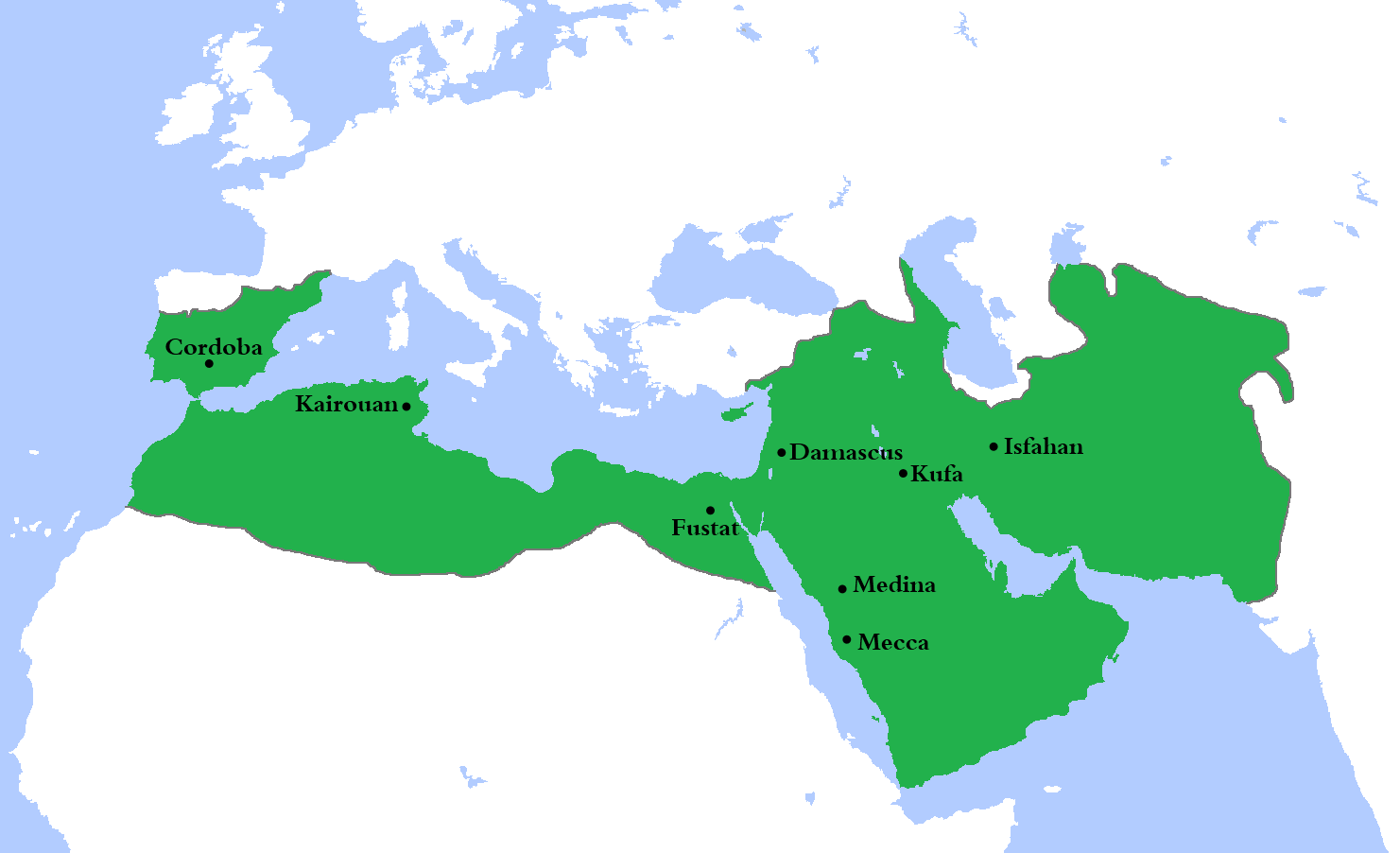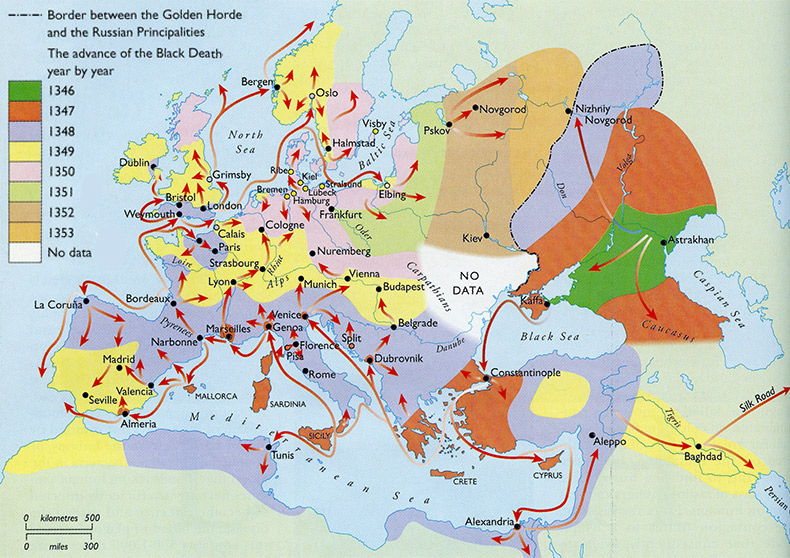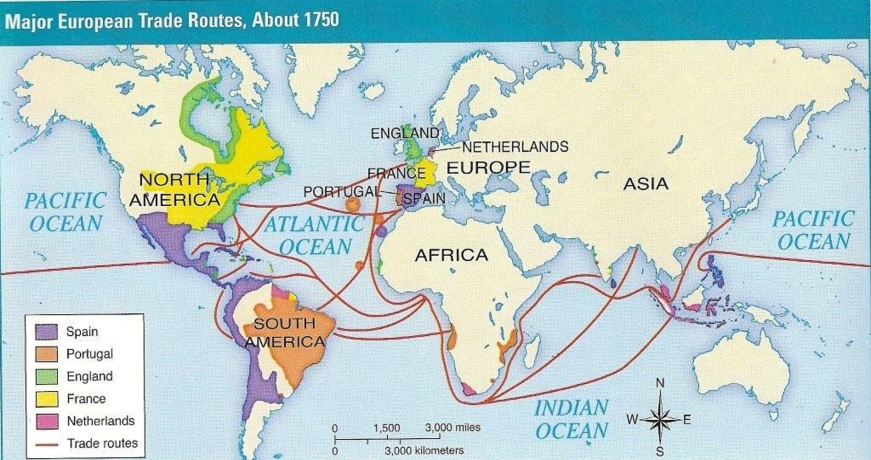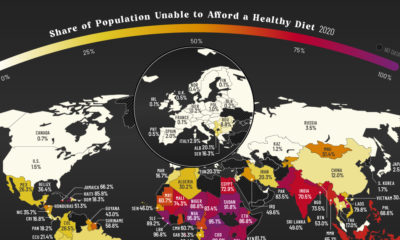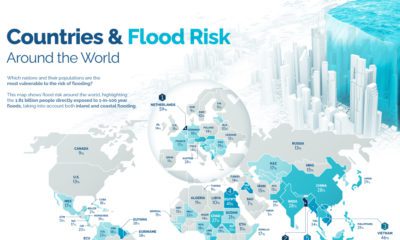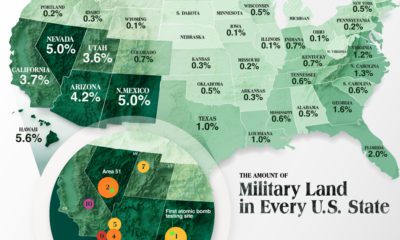You may be familiar with the achievements of prominent societies like the Romans, Mongols, or Babylonians, but how do all of their stories intertwine over time and geography?
Visualizing the History of the World
Today’s video comes to us from Ollie Bye, and it attempts to integrate the histories of all major civilizations known by historians into a single, epic video.
Similar to the Histomap, it’s pretty much impossible for a video like this to be perfect due to biases and a general lack of data. However, it’s still a compelling attempt at showing global history in a short and sweet fashion. Let’s look at some specific moments on the video that particularly stand out.
750 AD: The Umayyad Caliphate
One of the largest empires in history, the Umayyad Caliphate peaked sometime around 750 AD.
Conquering most of North Africa, the Middle East, and even parts of Europe (including modern-day Spain, Portugal, and France), the Umayyads commanded a formidable territory with an area of 11,100,000 km² (4,300,000 sq. mi) and encompassing 33 million people.
1279: Mongol Dominance
No history of the world is complete without a mention of the Mongols. Nearby societies have always been on edge when nomadic tribes in the Eurasian Steppe entered into organized confederations. Similar to the Huns or various Turk federations, the Mongols were known for their proficiency with horses, bows, and tactics like the feigned retreat. Under the leadership of Temüjin — also known as Genghis Khan — the Mongols conquered one of the largest empires by land.
The empire reached its greatest extent just two years after the death of Genghis Khan. Later on, it fragmented into smaller empires that were also quite notable in the context of world history. For example, Kublai Khan — the grandson of Genghis Khan — even went on to begin the influential Yuan Dynasty in China.
1346: The Black Death
The video also shows other vital stats, such as an estimate of global population through the ages. In the mid-14th century, you can see this number take a rare U-turn, as millions of people die from the infamous and deadly Bubonic Plague.
The Black Death — one of the most devastating pandemics in the history of the world — hit Europe in 1346, and it eventually killed 30-60% of the continent’s population. There is no exact figure on the final death toll, but historians estimate it to be somewhere between 75 and 200 million people throughout Eurasia.
1418: The Age of Discovery
The video also provides a 10,000-foot view of the Age of Discovery, a period of time in which European powers explored the world’s oceans.
This colonial period marks the beginning of globalization, creating wide-ranging impacts that set the stage for more modern history. In the video, it’s possible to see European colonies develop in all parts of the world, as well as how they eventually morphed into the countries that dot the globe today.
Playing the History Game
While it is certainly ambitious, not everyone will agree that this is a successful attempt at portraying world history – even in the limited scope of time allotted. One key detail that seems to be missing, for example, is showing the development of the indigenous societies that existed in North America for thousands of years. That said, it’s also not clear what data and records are available to show these maps over many centuries of time. Despite the possible flaws, the video does pack a lot of information into a short period of time, creating a compelling opportunity for learning and discussion. Like the Histomap, it may not be a definitive history of the world – but instead, it’s a useful attempt that stimulates our appetite for more information about the world and the societies that inhabit it. on Even while political regimes across these countries have changed over time, they’ve largely followed a few different types of governance. Today, every country can ultimately be classified into just nine broad forms of government systems. This map by Truman Du uses information from Wikipedia to map the government systems that rule the world today.
Countries By Type of Government
It’s important to note that this map charts government systems according to each country’s legal framework. Many countries have constitutions stating their de jure or legally recognized system of government, but their de facto or realized form of governance may be quite different. Here is a list of the stated government system of UN member states and observers as of January 2023: Let’s take a closer look at some of these systems.
Monarchies
Brought back into the spotlight after the death of Queen Elizabeth II of England in September 2022, this form of government has a single ruler. They carry titles from king and queen to sultan or emperor, and their government systems can be further divided into three modern types: constitutional, semi-constitutional, and absolute. A constitutional monarchy sees the monarch act as head of state within the parameters of a constitution, giving them little to no real power. For example, King Charles III is the head of 15 Commonwealth nations including Canada and Australia. However, each has their own head of government. On the other hand, a semi-constitutional monarchy lets the monarch or ruling royal family retain substantial political powers, as is the case in Jordan and Morocco. However, their monarchs still rule the country according to a democratic constitution and in concert with other institutions. Finally, an absolute monarchy is most like the monarchies of old, where the ruler has full power over governance, with modern examples including Saudi Arabia and Vatican City.
Republics
Unlike monarchies, the people hold the power in a republic government system, directly electing representatives to form government. Again, there are multiple types of modern republic governments: presidential, semi-presidential, and parliamentary. The presidential republic could be considered a direct progression from monarchies. This system has a strong and independent chief executive with extensive powers when it comes to domestic affairs and foreign policy. An example of this is the United States, where the President is both the head of state and the head of government. In a semi-presidential republic, the president is the head of state and has some executive powers that are independent of the legislature. However, the prime minister (or chancellor or equivalent title) is the head of government, responsible to the legislature along with the cabinet. Russia is a classic example of this type of government. The last type of republic system is parliamentary. In this system, the president is a figurehead, while the head of government holds real power and is validated by and accountable to the parliament. This type of system can be seen in Germany, Italy, and India and is akin to constitutional monarchies. It’s also important to point out that some parliamentary republic systems operate slightly differently. For example in South Africa, the president is both the head of state and government, but is elected directly by the legislature. This leaves them (and their ministries) potentially subject to parliamentary confidence.
One-Party State
Many of the systems above involve multiple political parties vying to rule and govern their respective countries. In a one-party state, also called a single-party state or single-party system, only one political party has the right to form government. All other political parties are either outlawed or only allowed limited participation in elections. In this system, a country’s head of state and head of government can be executive or ceremonial but political power is constitutionally linked to a single political movement. China is the most well-known example of this government system, with the General Secretary of the Communist Party of China ruling as the de facto leader since 1989.
Provisional
The final form of government is a provisional government formed as an interim or transitional government. In this system, an emergency governmental body is created to manage political transitions after the collapse of a government, or when a new state is formed. Often these evolve into fully constitutionalized systems, but sometimes they hold power for longer than expected. Some examples of countries that are considered provisional include Libya, Burkina Faso, and Chad.
